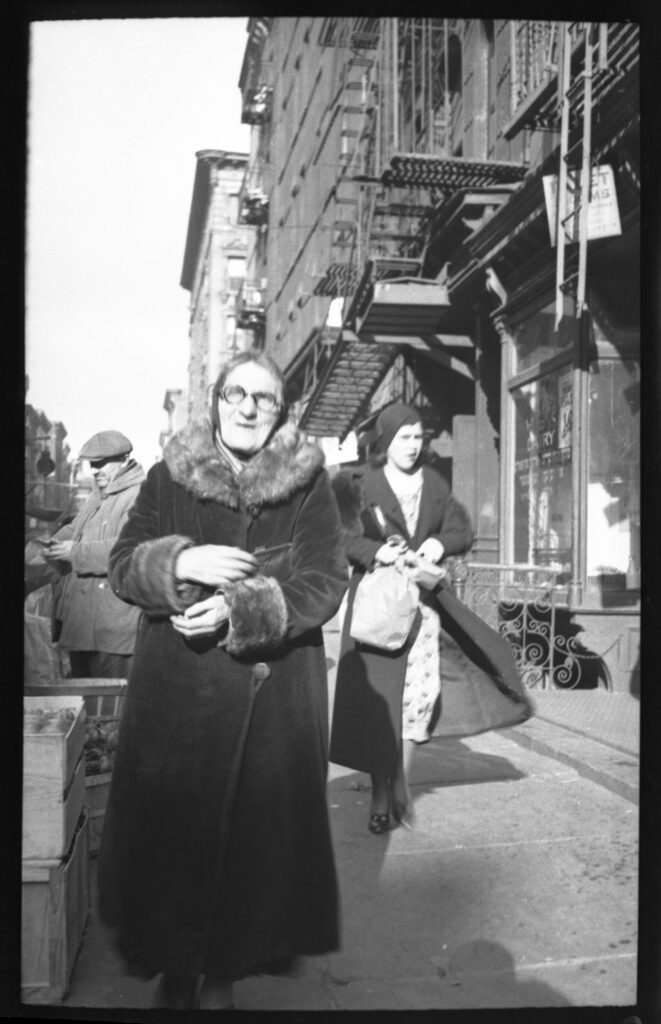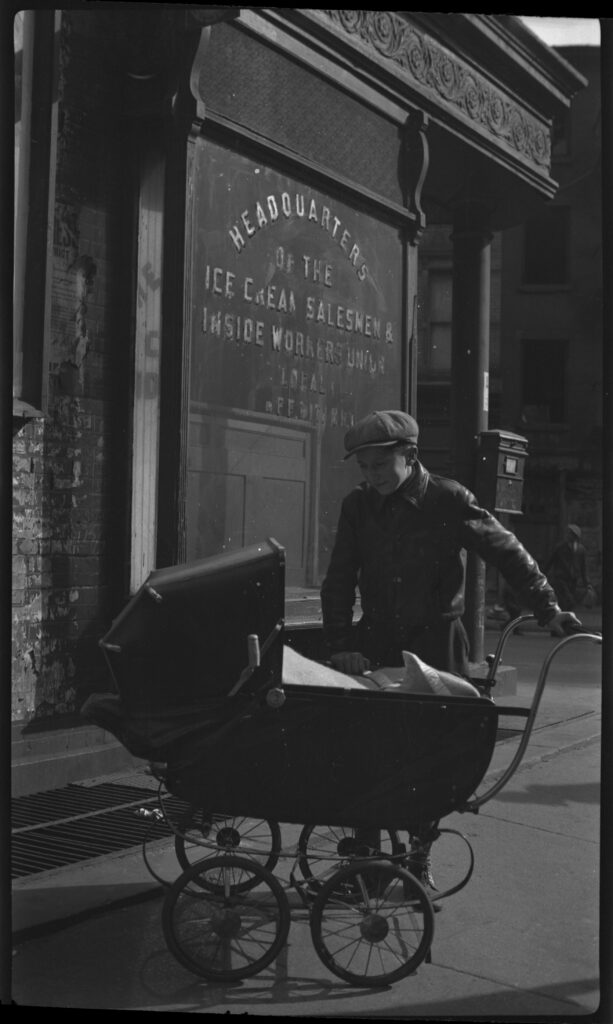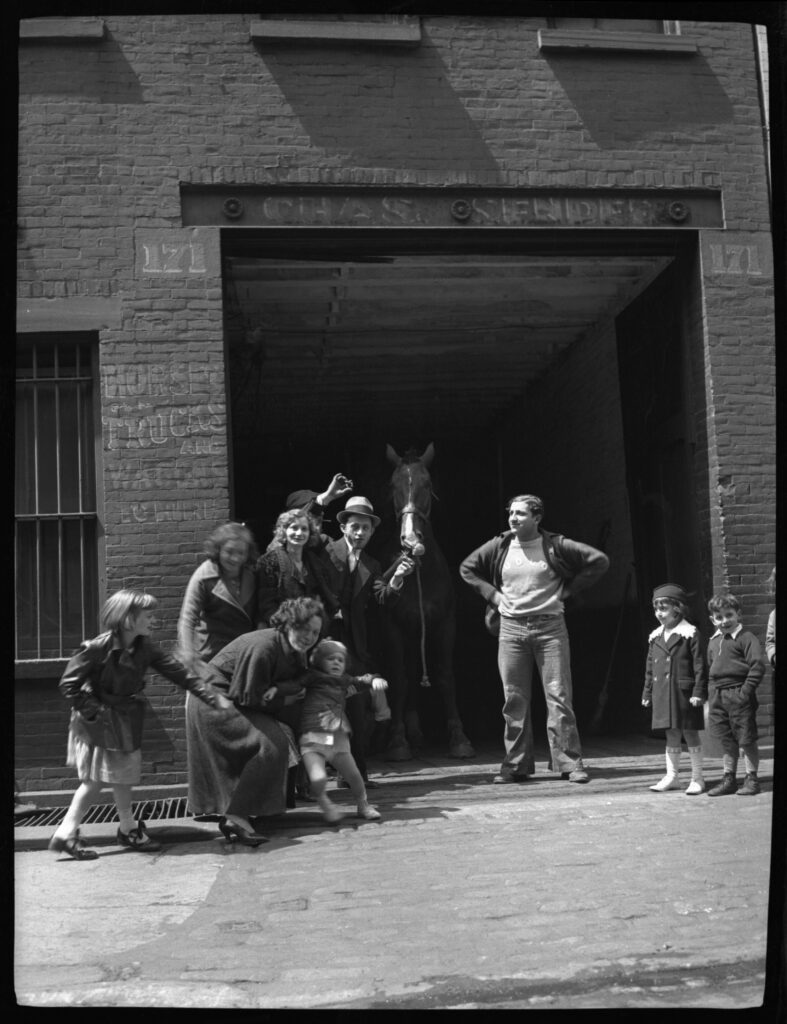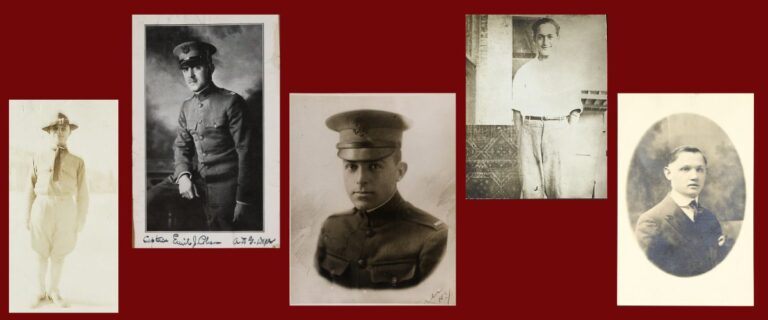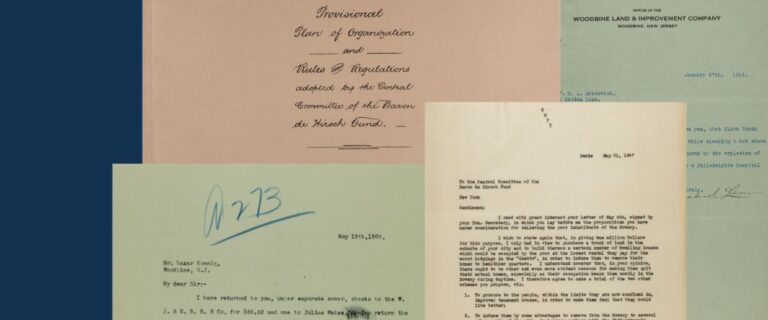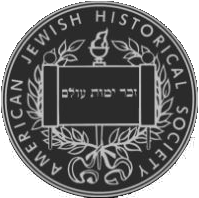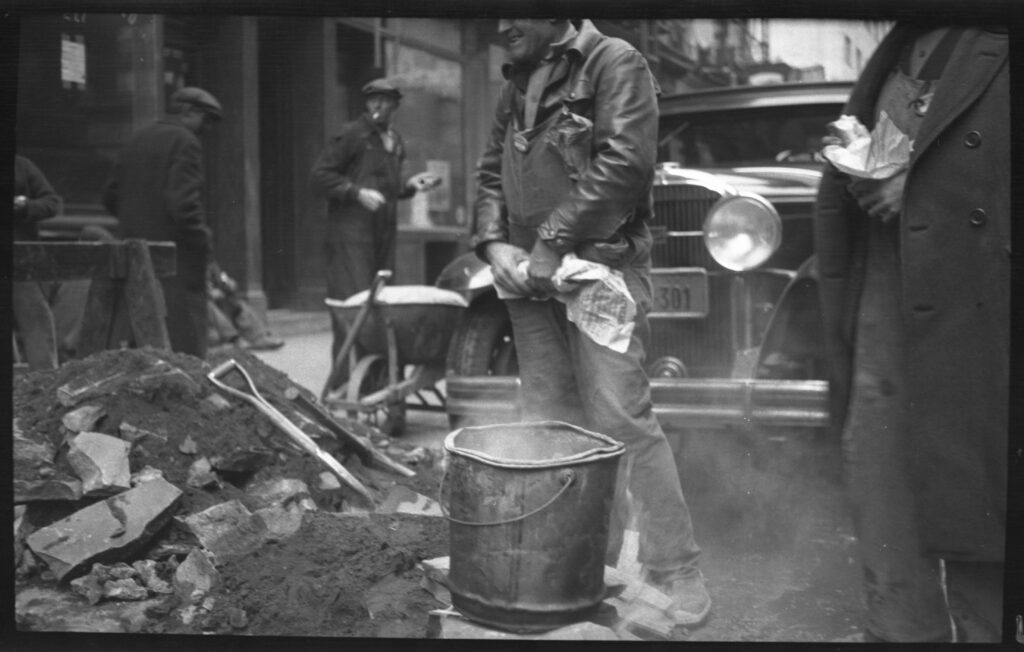
In 1931, while enrolled at the Training School for Jewish Social Work, J.B. Lightman had the idea to conduct a photographic study of Manhattan’s Lower East Side. He had learned of the city’s upcoming east side reconstruction programs, which would drastically change the landscape of this culturally significant neighborhood. In his research diary, Lightman wrote the following:
“It was felt that there was passing a picture of Jewish communal life, activities, and endeavor, a record of which would someday be a matter of historical significance, as well as source material for the understanding of the early struggles and movements working toward the adjustment of Jewry in New York, and possibly in America.”
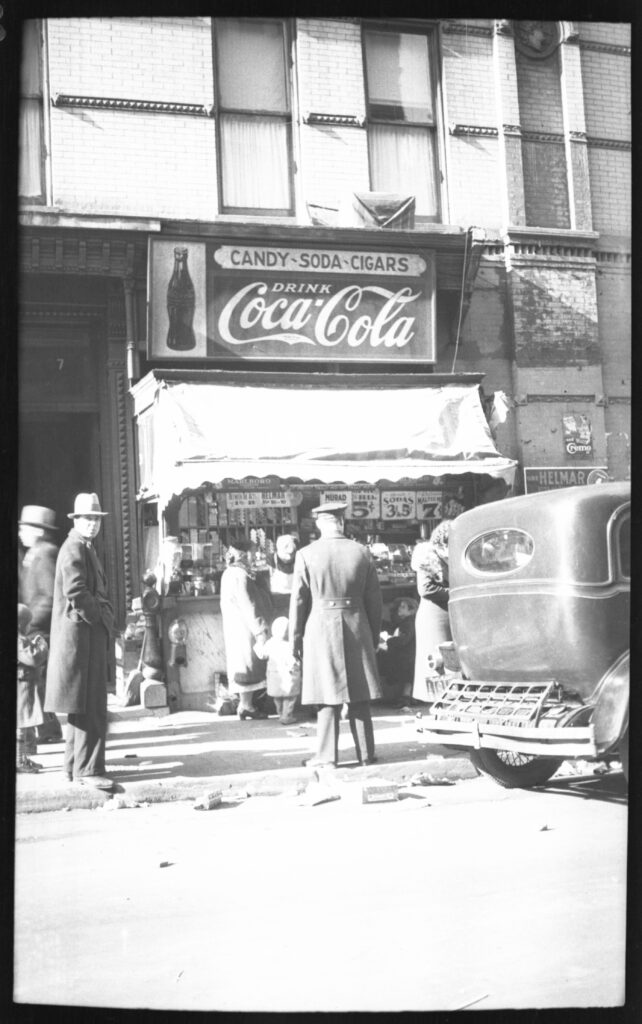
With the help of library student A.J. Simon, Lightman compiled a list of subject matter which the photographic study would cover, including specified types of buildings, businesses, individuals, and street scenes. Additional research to determine which of these subjects may already exist within NYPL’s photograph collections was conducted by Miss Estelle Cooper. The completed bibliography, along with a map of the lower east side divided into 13 major sections, would allow Lightman and Simon to systematically record the neighborhood as it was from 1932-1934.
The resulting images (over 300 in total) expertly document the Jewish communal life that Lightman was so eager to preserve. It is interesting to note that most of the photographs were taken with a Zeiss collapsible pocket camera, allowing the user to take eight consecutive photographs without drawing attention from the public. The downside to this method is that a pocket camera does not offer the same amount of control as a larger format camera, often resulting in blurry and underexposed images. While this does appear to be the case in many of Lightman’s photographs, the use of a pocket camera enabled him to capture some remarkably candid images of a vanishing way of life – paving the way for a generation of prolific Jewish street photographers.
For more about this collection visit: Records of the Graduate School for Jewish Social Work (New York, N.Y.), undated, 1925-1950 [I-7]

